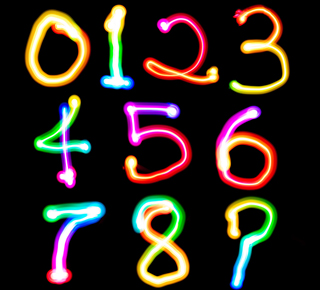What’s on Offer
This section contains 180 interactive maths quizzes for the Eleven Plus. Work through key topics, check understanding quickly, and build confidence with short, focused practice.
Maths 11-Plus Subjects
The quizzes cover the core areas likely to appear on exam papers. Use them to practise steadily, then review any errors right away.
Maths Overview
Eleven Plus Maths checks how well pupils can apply number skills to real problems under time pressure — from arithmetic and fractions to measures, data and ratio.
The Significance of the 11 Plus
The exam gauges readiness for selective schools. Regular, short practice helps pupils become familiar with question styles and improves accuracy under timed conditions.
11 Plus Maths Test
Expect a mixture of straightforward calculations and multi-step problems. Read questions carefully, check units, and use working to avoid slips.
Subjects likely to appear on the exam paper
- Addition: Understanding and performing addition operations to combine two or more numbers.
- Subtraction: Understanding and performing subtraction operations to find the difference between two numbers.
- Ordering Numbers: Arranging numbers in ascending or descending order, helping students recognize number patterns.
- Decimals: Knowledge of decimal numbers, including place value, addition, subtraction, multiplication, and division involving decimals.
- Fractions: Understanding fractions, including adding, subtracting, multiplying, and dividing fractions, and converting between fractions and decimals.
- Handling Data: Ability to collect, organize, interpret, and analyze data, often involving charts, graphs, and statistics.
- Measures and Multiples: Familiarity with units of measurement (e.g., length, weight, volume) and understanding multiples and factors of numbers.
- Negative Numbers: Understanding and performing operations with negative numbers, including addition, subtraction, and multiplication.
- Number Sequences: Recognizing and continuing number sequences, including arithmetic and geometric progressions.
- Percentages: Understanding percentages, calculating percentages of numbers, and solving problems involving percentage changes.
- Perimeter and Area: Calculating the perimeter (the sum of all sides) and area (surface space) of geometric shapes such as rectangles, triangles, and circles.
- Place Values: Grasping the concept of place value, understanding the significance of digits in a number.
- Position: Understanding spatial relationships, directions, and coordinates on grids and maps.
- Properties of Numbers: Familiarity with various number properties such as prime numbers, factors, and divisibility rules.
- Ratio: Understanding and working with ratios, including simplifying ratios and solving problems involving proportions.
- Rounding: Rounding numbers to the nearest whole number, tenth, hundredth, etc., as required in different contexts.
- Shapes: Recognizing and identifying various geometric shapes, understanding their properties, and solving problems related to them.
- Solving Problems: Developing problem-solving skills, including breaking down complex problems into manageable steps and applying appropriate math techniques.
- Time: Telling time accurately, converting between different units of time (e.g., seconds, minutes, hours), and solving time-related problems.
Frequently Asked Questions
How should we use the quizzes day-to-day?
Start with an easier topic, then step up to a trickier one. Track scores over time, revisit weaker areas, and aim for short, frequent practice rather than long, infrequent sessions.
Do the difficulty labels match the exam exactly?
They’re a guide. Real papers mix difficulties. Use the labels to build fluency first, then practise switching between topics to mirror exam conditions.
What if a topic feels unfamiliar?
Skim any notes, play an Easy quiz in that topic, then move up a level. If mistakes repeat, slow down, read the question wording carefully and check units or diagrams.
There are no official government guidelines for the eleven plus - each area has its own set of rules! As an example, here is the : Lincolnshire Guidelines for 11 Plus.
Author: Frank Evans (Specialist 11 Plus Teacher and Tutor)







-List.jpg)

-List-B.jpg)
-List.jpg)

-List.jpg)
-List.jpg)

-List.jpg)
-List.jpg)

-List.jpg)
-List.jpg)

-List.jpg)
-List.jpg)

-list.jpg)
-List.jpg)

-List.jpg)
-List.jpg)

-List.jpg)
-List.jpg)

-List.jpg)
-List.jpg)

-List.jpg)
-List.jpg)

-List.jpg)
-List.jpg)

-List.jpg)
-List.jpg)

-List.jpg)
-List.jpg)

-List.jpg)
-List.jpg)

-List.jpg)
-List.jpg)

-List.jpg)
-List.jpg)

-List.jpg)
-List.jpg)

-List.jpg)
-List.jpg)

-List.jpg)
-List.jpg)

-List.jpg)
-list.jpg)

-List.jpg)
-List.jpg)

-List.jpg)
-List.jpg)

-List.jpg)
-List.jpg)

-List.jpg)
-List.jpg)

-List.jpg)
-List.jpg)

-List.jpg)
-List.jpg)

-List.jpg)
-List.jpg)

-List.jpg)
-List.jpg)

-List.jpg)
-list.jpg)

-List.jpg)
-List.jpg)

-List.jpg)
-List.jpg)

-List.jpg)
-List.jpg)

-List.jpg)
-list.jpg)

-List.jpg)
-List.jpg)

-List.jpg)
-list.jpg)

-list.jpg)
-List.jpg)

-List.jpg)
-List.jpg)

-List.jpg)
-List.jpg)

-List.jpg)
-List.jpg)

-List.jpg)
-List.jpg)

-list.jpg)
-List.jpg)

-list.jpg)
-List.jpg)

-list.jpg)
-List.jpg)

-list.jpg)
-list.jpg)

-list.jpg)
-List.jpg)

-list.jpg)
-List.jpg)

-List.jpg)
-List.jpg)

-List.jpg)

-list.jpg)

-List.jpg)

-List.jpg)

-List.jpg)

-List.jpg)

.jpg)

.jpg)

-List.jpg)

-List.jpg)

-List.jpg)

-List.jpg)

-List.jpg)

-List.jpg)

-List.jpg)

-List.jpg)

-List.jpg)

-List.jpg)